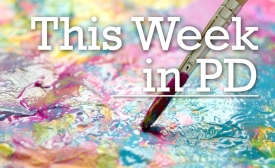art diplomacy
To attract young people from the neighborhood of about 100,000 people, the museum’s founders have sought to form alliances with schools and have taken steps to create a cultural exchange with the nearby Brussels Boxing Academy.
The New Zealand embassy in Beijing screened “Inside Red China” this month before the start of the film fest. The movie provides a preview of Chinese life during the 1950s. China and New Zealand hope to fortify a mutual interest in cultural exchange. The country’s recent efforts come in the form of films.
The celebrations that took place last week on the sixty fifth anniversary of the establishment of Pakistan-Chinese relationship were again marked by lack of events that signified Chinese soft power.
Explore the public diplomacy potential of art to facilitate cross-cultural dialogue and understanding.
Last Wednesday afternoon, four thousand miles away, Wolfgang Tillmans slouched at his desk. The photographer had Skyped me from the apartment above his Berlin studio, to discuss the poster campaign he’d released that day against “Brexit,” the British referendum on quitting the European Union, slated for June 23rd. […] if the E.U. is to survive, Tillmans said, it must become fashionable.

From literary exchanges to music festivals, this PD News roundup is all about art.
Entitled “Muhon: Traces of An Adolescent City,” and curated by Leandro V. Locsin Partners (LVLP), the Philippine Pavilion will be located at Palazzo Mora in Venice, Italy. [...] The pavilion, which tackles Metro Manila’s built heritage, consists of the works by six architects and firms: 8×8, CS Architecture, Lima Architecture, Manosa & Co. Inc., Eduardo Calma, and Jorge Yulo; as well as three contemporary artists: Poklong Anading, Tad Ermitaño, and Mark Salvatus.
New Zealand researchers say a vast collection of Chinese art -- with items dating back 5,000 years -- is offering new insights into diplomatic links between the two countries since the founding of the People's Republic of China in 1949. [...] The collection, came together with the approval of the People's Republic of China government, is a very early PRC exercise in the use of art for cultural diplomacy, said Bullen.







